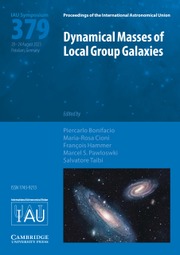No CrossRef data available.
Article contents
Zooming on the emerging ionized regions of pPNe with ALMA
Published online by Cambridge University Press: 06 October 2025
Abstract
We report on recent results from our successful and pioneering observational program with ALMA to study emerging ultracompact HII regions of pre-planetary nebulae (pPNe) using mm-wavelength recombination lines (mRRLs) as new optimal tracers. We focus on our study of two poster-child pPNe, namely, M 2-9 and CRL 618. We reveal the structure and kinematics of the enigmatic inner nebular regions of these objects with an unprecedented angular resolution down to 20-30 mas (∼15-30 AU linear scales). For both targets, the ionized central regions are elongated along the main symmetry axis of the large-scale nebulae, consistent with bipolar winds, and show notable axial velocity gradients with expansion velocities of up to ∼100 kms. The intensity and width of the H30α profiles are found to be time variable, denoting changes on scales of a few years of the physical properties and kinematics of the present-day post-AGB ejections. Our ongoing analysis involves 3D, non-LTE radiative transfer modeling of the mRRLs and free-free continuum emission. This approach allows us to provide an exceptionally detailed description of the physical conditions in the innermost layers of these well known pPNe.
Keywords
Information
- Type
- Contributed Paper
- Information
- Proceedings of the International Astronomical Union , Volume 19 , Symposium S384: Planetary Nebulae: A Universal Toolbox in the Era of Precision Astrophysics , December 2023 , pp. 330 - 336
- Copyright
- © The Author(s), 2025. Published by Cambridge University Press on behalf of International Astronomical Union


